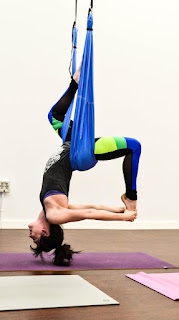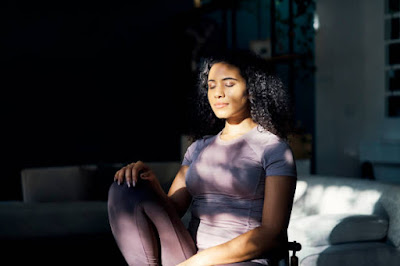The Transition from Winter to Spring: Yoga for Renewal and Growth
The Transition from Winter to Spring: Yoga for Renewal and Growth
Winter’s long nights and limited daylight can take a toll on our physical and emotional well-being, often leaving us feeling depleted and disconnected. The transition from winter to spring is a natural time to embrace renewal and growth, and aligning your yoga practice with this seasonal shift can be transformative. By adapting to the changing energies and using yoga principles to support both your body and mind, you can navigate these darker months and prepare for the revitalization that spring brings.
Understanding the Impact of Seasonal Affective Disorder (SAD)
Seasonal Affective Disorder (SAD) is a type of depression that typically occurs during the fall and winter months when daylight hours are reduced. It affects millions of people each year, with symptoms including fatigue, sadness, irritability, and difficulty concentrating. The lack of sunlight disrupts our body’s internal clock, known as the circadian rhythm, and reduces the production of serotonin, a neurotransmitter that regulates mood.
Even those who don’t experience full-blown SAD often feel the emotional and physical effects of winter, such as increased lethargy, brain fog, or a general sense of heaviness. Addressing these challenges with yoga and mindfulness can provide relief and create a sense of stability and lightness, even on the darkest days.
Embracing the Challenges of Winter with Yoga
Rather than resisting the natural ebb and flow of energy that winter invites, yoga offers a pathway to honor and work with this slower rhythm. Winter, after all, is a time for introspection, gentle nurturing, and preparing for the growth to come. With thoughtful yoga practices, we can use this time to go inward, cultivating the physical and emotional balance needed to flourish in spring.
Yoga Principles for Winter Well-Being
To make the best of winter, consider practices that ground, warm, and soothe the body while also creating opportunities for lightness and joy. Here are a few key yoga principles to guide your practice through the colder, darker months:
Grounding and Stability
Winter is a time when the earth feels still and heavy, and our yoga practice can reflect this by focusing on grounding poses. Forward folds, wide-legged standing poses, and seated stretches can be comforting, helping you feel rooted and secure. These poses activate the root chakra, which governs feelings of safety and connection to the earth.
Try incorporating poses like:
- Child’s Pose (Balasana): A deeply nurturing pose that soothes the nervous system and helps you feel safe and supported.
- Seated Forward Fold (Paschimottanasana): This calming posture gently stretches the back body and encourages a sense of surrender and introspection.
- Mountain Pose (Tadasana): Stand tall and connect with the earth beneath you. Feel your feet rooting down, creating a sense of stability and presence.
Gentle Warming Sequences
To combat the physical and emotional chill of winter, build gentle heat in the body with flowing sequences. Sun Salutations are a powerful way to honor the sun, even when it’s hidden behind the clouds. Moving your body intentionally with breath creates warmth and lifts your spirits.
Consider incorporating:
- Slow Sun Salutations (Surya Namaskar): Perform each movement mindfully, savoring the warmth that builds with each round. Feel the energy of the sun within you, even on the coldest days.
- Twists and Hip Openers: Twisting poses like Revolved Chair Pose (Parivrtta Utkatasana) and hip openers like Pigeon Pose (Eka Pada Rajakapotasana) help release stagnant energy and prepare you for the renewal of spring. These poses also aid in detoxification and emotional release.
Restorative Practices for Deep Renewal
Winter can be an ideal time for restorative and yin yoga practices, which emphasize stillness and deep rest. These slower forms of yoga help regulate the nervous system and encourage profound relaxation, which is essential for combating the effects of seasonal depression and winter fatigue.
Use props like bolsters, blankets, and eye pillows to support restorative poses such as:
- Reclining Bound Angle (Supta Baddha Konasana): Open the heart and hips in this restful pose, allowing the body to release tension and invite calm.
- Legs Up the Wall (Viparita Karani): A gentle inversion that soothes the nervous system, reduces swelling in the legs, and promotes a sense of surrender. Visualize releasing the heaviness of winter as you rest.
The Power of Morning Light
One of the most powerful ways to support your well-being in winter is by prioritizing exposure to natural light, particularly in the early morning hours. Light exposure helps regulate melatonin production and align your circadian rhythms, boosting energy levels and improving mood. Research shows that even brief exposure to morning light can help alleviate symptoms of SAD and reset your internal clock.
Integrating Light Exposure into Your Yoga Routine
Practicing yoga near a window where the morning sun streams in can magnify the benefits of your practice. Here are some ideas to incorporate light exposure into your morning routine:
Choose a Sunlit Space
Set up your yoga mat in a room where natural light is abundant. If possible, open the curtains or blinds to let the morning sunlight flood in. Begin your practice seated, facing the light, and take a few moments to bask in its glow. Feel the warmth on your skin and visualize the light energizing every cell of your body. This can be a simple yet profound way to start your day on a positive note.
Sun Salutations with Intention
Begin with a few rounds of Sun Salutations (Surya Namaskar), moving with the intention of honoring the sun. With each upward movement, feel the lightness and promise of the coming spring, and with each downward movement, let go of winter heaviness. Practicing with the sun as your focal point can amplify feelings of hope and renewal. You can even set an intention for your practice, such as “I welcome the light and energy of spring into my life.”
Morning Meditation in the Light
After your physical practice, take a few moments for stillness. Sit comfortably, facing the sunlight, and close your eyes. Focus on the sensation of the light on your face, breathing deeply and slowly. Visualize the light filling your body, bringing warmth and vitality to every part of you. Use this time to set a positive intention for the day, connecting with the energy of renewal. This simple meditation can be incredibly uplifting, especially during the winter months.
Supporting Emotional Balance
The emotional toll of winter can be significant, but yoga and breathwork can help. Pranayama, or breath control, is a powerful way to lift your spirits and calm anxiety. Consider these practices to support emotional balance:
- Breath of Joy: This energizing breathwork technique can help combat winter blues. Standing tall, inhale as you lift your arms overhead in three parts, and exhale forcefully as you bend forward. Repeat for several rounds, then pause and feel the surge of energy and joy within.
- Alternate Nostril Breathing (Nadi Shodhana): A calming practice that balances the left and right hemispheres of the brain, promoting a sense of inner peace and equilibrium. This is especially helpful for managing stress and anxiety during the winter months.
Practicing Gratitude and Presence
Winter may not be your favorite season, but by practicing gratitude and presence, you can shift your perspective. Each day, take a moment to acknowledge the small beauties of winter—the quiet snowfalls, the crisp air, the introspective nights. Use your yoga practice to foster a sense of acceptance and gratitude for the present moment, even if it’s challenging. Journaling can be a helpful complement to your practice. Write down three things you’re grateful for each day, no matter how small.
Preparing for Spring: Planting Seeds of Intention
As the days gradually lengthen, we can use yoga to prepare for the new growth of spring. In the final weeks of winter, spend time reflecting on what you want to cultivate in your life. During Seated Meditation, visualize planting seeds of intention. What do you hope to grow and nurture in the months to come? This practice of mindful intention-setting can help you transition gracefully from winter’s stillness to spring’s vibrancy.
Consider incorporating a Journaling Practice to support your intentions. Write about your dreams for the coming season and the steps you’ll take to nurture them. This can create a tangible connection between your yoga practice and your personal growth journey.
Conclusion
Aligning your yoga practice with the transition from winter to spring can be a powerful way to support both physical and emotional renewal. By embracing grounding poses, gentle warming sequences, restorative practices, and prioritizing early morning light exposure, you can navigate the darker months with more ease and grace. Use this time to go inward, honor the season’s wisdom, and prepare for the abundant growth that awaits you in spring. With intentional practices, you can transform the challenges of winter into an opportunity for deep healing and lasting transformation.
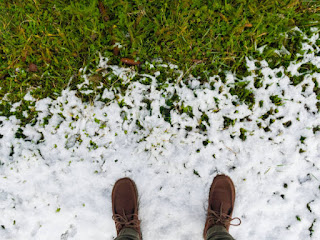
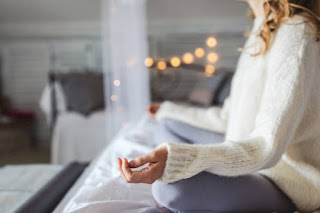

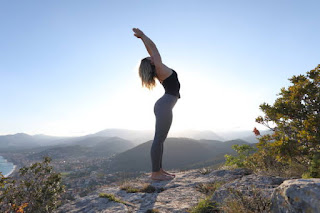
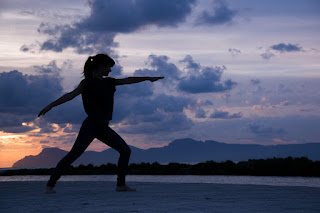

![Top Classes in Mindfulness Online – Updated [May 2024]](https://harmonycentered.com/wp-content/uploads/2024/05/IMG_2574-1.jpeg)
